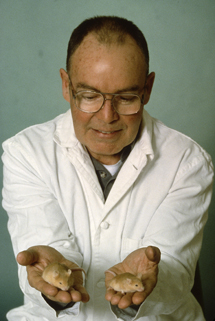IGF-1:tetanus toxin fragment C fusion protein improves delivery of IGF-1 to spinal cord but fails to prolong survival of ALS mice.
Document Type
Article
Publication Date
2009
First Page
1
Last Page
19
JAX Source
Brain Res 2009 Sep; 1287:1-19.
Abstract
To improve delivery of human insulin-like growth factor-1 (hIGF-1) to brain and spinal cord, we generated a soluble IGF-1:tetanus toxin fragment C fusion protein (IGF-1:TTC) as a secreted product from insect cells. IGF-1:TTC exhibited IGF-1 and TTC activity in vitro; it increased levels of immunoreactive phosphoAkt in treated MCF-7 cells and bound to immobilized ganglioside GT1b. In mice, the fusion protein underwent retrograde transport by spinal cord motor neurons following intramuscular injection, and exhibited both TTC- and IGF-1 activity in the CNS following intrathecal infusion. Analogous to the case with TTC, intrathecal infusion of the fusion protein resulted in substantial levels of IGF-1:TTC in spinal cord tissue extracts. Tissue concentrations of hIGF-1 in lumbar spinal cords of mice infused with IGF-1:TTC were estimated to be approximately 500-fold higher than those in mice treated with unmodified recombinant hIGF-1 (rhIGF-1). Like rhIGF-1, infusion of IGF-1:TTC reduced levels of IGF-1 receptor immunoreactivity in the same extracts. Despite raising levels of exogenous hIGF-1 in spinal cord, intramuscular- or intrathecal administration of IGF-1:TTC had no significant effect on disease progression or survival of high-expressing SOD1(G93A) transgenic mice. IGF-1:TTC may prove to be neuroprotective in other animal models of CNS disease or injury known to be responsive to unmodified IGF-1.
Recommended Citation
Chian RJ,
Li J,
Ay I,
Celia SA,
Kashi BB,
Tamrazian E,
Matthews JC,
Bronson RT,
Rossomando A,
Pepinsky RB,
Fishman PS,
Brown RH,
Francis JW.
IGF-1:tetanus toxin fragment C fusion protein improves delivery of IGF-1 to spinal cord but fails to prolong survival of ALS mice. Brain Res 2009 Sep; 1287:1-19.


